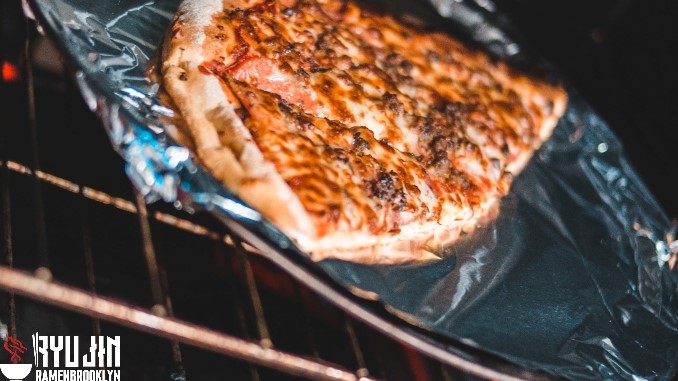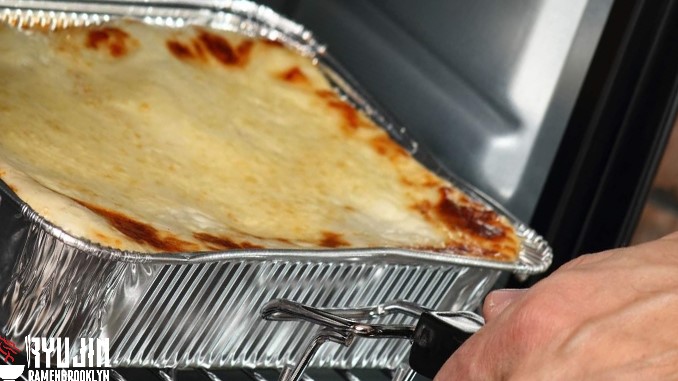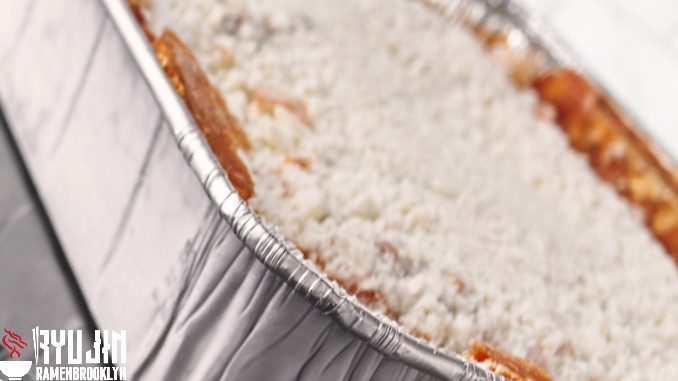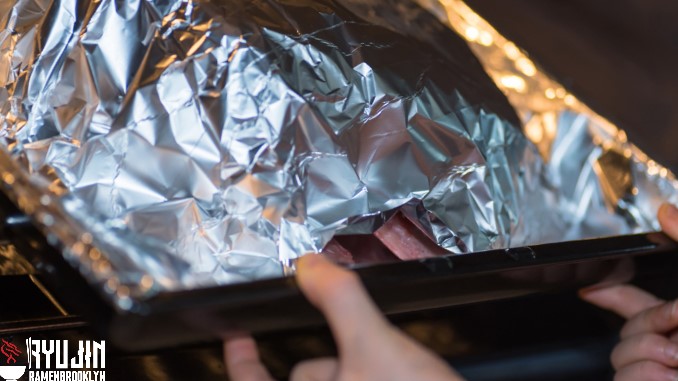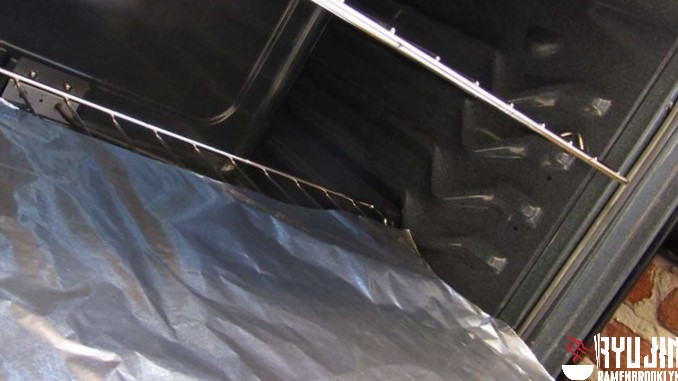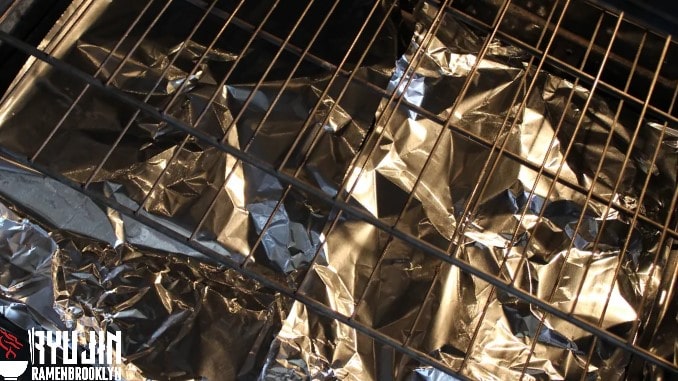Can You Put Aluminum Foil in The Oven?
When it comes to cooking, oven safety is key. You don’t want to end up with a kitchen full of smoke or a house on fire! So, can you put aluminum foil in the oven? This is a question that many people have asked, and there is some debate about whether or not it is safe to do so.
Recently, I came across a blog post by a popular food blogger in which she claimed that aluminum foil could be used in the oven to cook food. Intrigued, I decided to test this claim out for myself. After doing some research, I found that there are, in fact, a few ways you can use aluminum foil in the oven.
The aluminum foil has been a go-to in our household for baking cookies, fries, and other dishes. Although it’s relatively expensive when compared to other options such as washable cookie sheets or pans that can be thrown away after use with no need to worry about cleanup time because they’re reusable but not always if you have young children at home who want something now then sorry there isn’t any room on the countertop!
We all have more important things to do than wash dishes, right? That’s not to say that we always choose foil over another material. But when life gets too busy, and our schedules fill up with other responsibilities- cooking dinner never occurs at the top of most people’s lists!
This blog post will discuss how to use aluminum foil in the oven and when it is appropriate. We will also provide some tips on safely using aluminum foil in the oven. Finally, we will provide some recipes you can try with aluminum foil in the oven.
- What Is Aluminum Foil?
- Can You Put Aluminum Foil in The Oven?
- What Can We Do with Aluminum Foil in The Oven?
- What to Do and Don’t with Aluminum Foil in The Oven?
- Do: Place the Aluminum Foil on Top of a Baking Sheet
- Do: Directly Cook in the Oven in a Makeshift Aluminum Foil Pan or Ready-Made Aluminum Foil Tray
- Do: Use Aluminum Foil as a Lid
- Don’t: Place the Aluminum Foil Directly on the Oven Rack
- Don’t: Use too much foil
- Don’t: Place the Aluminum Foil on the Bottom of the Oven
- FAQs
- Final Thought
What Is Aluminum Foil?
Aluminum foil is a thin sheet of aluminum often used in cooking. For example, it can line baking pans, wrap food, or cover food while it is being cooked. Aluminum foil is popular because it is versatile and can be used in various ways.
Thanks to its recyclability and safety, aluminum is the most common metal used for making foil. Unfortunately, tin cannot be recycled because it causes harmful chemical reactions when exposed to high temperatures, which makes this cooking unnecessary and hazardous in general– although not always!
The aluminum foil you use in your kitchen to protect food from burning is produced by an alloy of metal. The average thickness ranges between 6 micrometers (0,24 mils) and 0.2 mm (8 mils), depending on what type it may be, but there’s one more thing that makes each variety unique: how thickly they’re printed!
The thinnest aluminum foil found on the market is 0.005mm (0.2 mils) thick, while the best quality kitchen aluminum foil is about 0.0127 mm (0.5 mils) thick– still pretty darn thin! To give you an idea, human hair is about 70 micrometers in diameter, while other types of foil can be as much as 633 micrometers. So the average thickness of an aluminum can is around 0.035mm.
Heavy-duty aluminum foil is thicker than regular household variety and ideal for use in kitchens where high heat may be applied. The recommended maximum thickness is around 0.016mm (0,63 mils), up to 0,024mm (0,95 mils) for heavy-duty can withstand higher temperatures before breaking down, so if you have a long cooking time ahead or need your food cooked quickly, then this type will suit better!
You can’t have a kitchen without aluminum foil. This material is so versatile; it’s in every corner of your home, which is probably why you’re reading this article! Aluminum foil has many uses, from baking surfaces to coverings for delicate foods or storage containers- there are always new things coming up with what! So let me tell you something about it.
See more: How Does a Self-Cleaning Oven Work?
Heat Resistance
To get the best result from your aluminum foil, you need not worry about it burning up in an oven. The temperature inside of most ovens ranges between 500-600 degrees Fahrenheit which is halfway towards what can withstand this material without sustaining any damage or issue with its durability.
It can be used for high-heat cooking, such as broiling or grilling. When exposed to prolonged periods of heat, aluminum foil will not melt, catch fire, or release harmful toxins into the food.
However, it’s important to note that aluminum foil may melt and stick when placed at the bottom of your oven. This can cause damage not just for yourself but also for other people who use their kitchens! Additionally- if left long term -this could lead to an issue with heating elements because they’re touching all day every time someone opens up said oven.
Dull & Shiny Side
Aluminum foil comes in two different sides, the dull and shiny sides. So why does it have a different texture? The answer is simple: to make them easier for you!
The production process creates an outer layer that’s bumpy on one side while smooth against another; this gives each type their unique look so they’re not mistaken for either of those other identical-looking items (such as paper). However, when cooking or using heat-resistant properties, both surfaces remain equally effective at protecting your food from burning up inside–no matter which direction it’s facing!
Some people may think regular aluminum foil is always non-stick, but it’s not. That’s why you need to put cooking oil or use a spray if your food starts getting stickier than desired so it can be removed easily with little effort from the eater before serving them up on its plate at home! However, there’s a special type of foil sold now that will make any dish pop off its counterpart without even needing anything extra – how great does this sound?
Can You Put Aluminum Foil in The Oven?
The answer to “can you put aluminum foil in the oven?” is quite complicated. Still, it only takes a little knowledge about how high up on temperature scales this metal falls before knowing if your particular kitchen appliance will accept its presence.
Aluminum foil is an excellent cooking material, but it has some limitations when used in the oven. However, the maximum heat level of most thermal ovens is around 500 to 550 degrees Fahrenheit (the limit temperature of aluminum foil is 1200 degrees) which means that if you use aluminum carefully and properly, there shouldn’t be any problems whatsoever with burning your food or damaging its nutrients due t overexposure!
Some people are wondering whether they can put aluminum foil in the oven. The answer depends on your purpose for using it! If you want to use this material as an oven liner or cover the bottom of the rack, then no. It will not stick properly because of how smoothly surface areas touch against each other when moistened with water vapor during heating processes that cause fires from burning food particles trapped inside cracks between tiles following high fever episodes caused by bacteria infections. If there’s another reason why someone might need some help cooking acidic foods such as the plague, however, I recommend getting rid of them from sight asap before they eat us all!
If you plan on using aluminum foil for food wrapping, as the lining of your baking sheet, or cover when cooking acidic foods, then it’s safe. However if not – avoid doing so because these three methods may cause reactivity with certain materials in contact which can lead to leaks and stains!
Putting aluminum foil in the oven is safe. However, when not used correctly it may damage your porcelain surface or even cause uneven cooking which would give you an unappetizing result! So make sure to follow proper guidelines for using this product so that everything goes smoothly with no hassles at all.
With all these facts about aluminum foil, you’re probably wondering why we need it in the first place. Well, sit back and relax because this page will tell us everything there is to know on how best to use your oven without using any fancy materials like metal, plastic…or even wood!
Cooking with aluminum foil in the oven can be tricky. Of course, you’ll want to avoid certain methods depending on whether or not your food will react negatively, but some things just shouldn’t come into contact with it at all costs! So let’s dive right into this discussion so you know what not to do when using one for each method.
See more: Can Pyrex Glassware Go in The Oven?
What Can We Do with Aluminum Foil in The Oven?
While it’s true that aluminum foil can be used in the oven, there are some rules you should follow to avoid ruining your meal. Here are three main methods of cooking with aluminum foil:
Wrapping Food
Aluminum foil is the best choice to wrap your foods in during the cooking process. There are 3 ways you can do so with aluminum, including using it as an oven-safe plate to protect against burning anything on top of what’s being cooked.
The first way to do this would be by fully wrapping all of these items up, usually for baking meats or vegetables that need protecting from outside elements such as moisture and air currents; since foil will lock everything within its borders – including juice-rich tenderness – they’ll stay nice and juicy!
The other way is by wrapping the bottom part, usually used for broiling poultry, so that it browns on both surfaces but doesn’t overdo things with grease or liquid in contact, w/paper-especially if there will be other dishes stacked above during the steaming process that can cause drippage.
The last, wrap certain parts in order not to have them come close enough to contact with heat sources such as fire pits during grilling sessions; placing a layer between two separate containers, so they don’t touch each other at all (for example, if one has boiling water placed inside it), and finally – though probably not what many would recommend doing because it’s complicated- putting some over meat immediately before smoking so the surface can crisp up nicely without being overcooked from direct contact with flames.
Aluminum foil is a great way to keep food moist and seasoned. It can be used as an easy cooking method by wrapping meats, vegetables, or even desserts before placing them on your oven’s rack so that they will not overcook from exposure! However, make sure you place these items onto something like baking sheets for safety reasons because if there are any leaks, then this could cause pretty bad spills, which would hurt their appearance too.
Most things are generally safe regarding the safety of using aluminum foil on food. However, one exception is that highly acidic foods like tomatoes or citrus fruits will react poorly with this material and cause an unpleasant flavor if you put them next time!
One way to avoid chemical reactions when baking acidic foods like tomatoes or citrus in the oven is by using glass containers and plastic wrap. You can also place a layer of parchment paper between your dish(es) and aluminum foil, ensuring that you don’t alter its flavor!
Covering Food
The second method to use aluminum foil is by covering your food. This can be done in two ways: to completely cover the dish you’re cooking. This is often done when making casseroles or lasagna so that the cheese on top doesn’t burn.
Unlike the wrapping method, all you do in this way is simply add a layer of aluminum foil on top of your food as a loose lid. The reason for doing so? To prevent the outer surfaces of your food from burning before the interior cooking process has been completed, but more importantly- foods cooked under such circumstances retain moisture better than those wrapped without any kind of protection!
The second way to cover food is by tenting it. This means you’ll place the foil over the food but not touch it, creating a little space between the two. This is often done with roast chicken so the skin can get crispy without burning.
Tenting is also beneficial if you’re worried about your food drying out. The foil will help create a barrier, so moisture doesn’t escape, keeping your food nice and moist.
Aluminum foil can also be used as a makeshift lid. If you’re cooking something on the stove and don’t have a lid that fits, you can create one out of foil. Just be sure to use caution as the foil will conduct heat and can cause burns.
With Parchment Paper
Parchment paper is another method that can be used in combination with aluminum foil. This type of paper is oven safe and can be used as an alternative to foil. When using parchment paper, you’ll want to use it in addition to foil rather than as a replacement. The two work well together and can help to prevent sticking and burning.
Parchment paper is often used when baking as it provides a non-stick surface. It can also be used to line pans, making cleanup a breeze. In addition, aluminum foil can make the perfect pairing with parchment paper to create a delicious and crispy base. Not only does this combination provide an excellent cooking surface, but it also ensures food won’t stick due to its non-stick properties combined with the high heat resistance qualities of aluminum sheets compared to other materials like steel or iron that would melt at higher temperatures resulting in stubborn browned patches on your dishware after use!
There are those who say you can use wax paper as a best-matched replacement for parchment. However, I doubt its suitability with ovens because sometimes it poses hazards if not used correctly, which may lead to some accidents in the kitchen, which isn’t great news given how expensive these items typically cost! So just stick closely to what has been perfected over the years – using only proper materials like parchment or foil will ensure your success at home cooking today.
To prevent leakage and make cleaning easier, add a layer of parchment paper below your aluminum foil. The non-stick feature will keep it from sticking to the oven rack, so you can just wipe off any messes without worrying about tears or rips in this durable material! This tip will make it easier to clean your grill after cooking greasy foods like poultry or meats.
If you’re looking for an easy way to make your cookies crispy on the bottom, try lining them with baking paper. You can also place this above aluminum foil and reduce cooking time by half! Whether it’s parchment or ‘baking,’ Having reusable components means there is no need to worry about throwing away anything when disposed of after use- just recycle where possible instead!
What to Do and Don’t with Aluminum Foil in The Oven?
To avoid any problems with your oven, it is important to know the best ways of using aluminum foil. Some methods may work well, while others should be avoided altogether because they can lead paint or other materials on fire which would then cause major damage both inside and outside of one’s home if left unchecked by an experienced contractor like yourself!
Do: Place the Aluminum Foil on Top of a Baking Sheet
Cleaning your baking sheets can be a pain! Sometimes you want to cook something in the oven but hate cleaning out all those nooks and crannies on top for some reason. Luckily, there’s an easy way around this: just place aluminum foil over any surface before adding ingredients so they don’t get stuck everywhere with grease or other yummy goodness while cooking—then simply remove everything once done!
Place a sheet of aluminum foil on top of your baking dish to prevent food spillage. Never place wrapped items such as foods directly onto an oven rack; always use this method with sturdy pans and dishes by placing them below or next (not over) other stronger materials like steel beams for there not be any bending moments put upon them during heating processes which could lead exposure damage due too high temperatures!
Do: Directly Cook in the Oven in a Makeshift Aluminum Foil Pan or Ready-Made Aluminum Foil Tray
Aluminum foil can line ovens so spills can be easily cleaned up. Place the foil on the bottom of the oven before preheating it. For electric ovens, place a sheet of heavy-duty aluminum foil over the heating element to help reflect heat and prevent food from burning. This will also make cleanup much easier if there are any drips or spills!
The oven is a great way to cook food without having pesky pots and pans. Just ensure you don’t have any holes or tears in your aluminum foil before placing anything into it, as this will prevent liquid leaks from happening!
Do: Use Aluminum Foil as a Lid
You can cover your dish with aluminum foil without worrying about any drawbacks. The food will bake evenly and retain its moisture, so you won’t have to worry when it’s time for dinner! Aluminum foil is an excellent choice for baking dishes because it helps retain moisture and prevents foods from drying out. It works especially well with ceramic glass or aluminum trays, which are durable enough to withstand high temperatures without breaking down in your oven – ensuring even heating of all ingredients!
However, remember that aluminum foil and acidic foods don’t go well together. This is what you have to keep in mind at all times. If a food has an acid taste or flavor, then avoid using it with the protection of protective wrapping like foil because it will react badly by interacting directly, which causes terrible tasting flavors on your palette!
Don’t: Place the Aluminum Foil Directly on the Oven Rack
If you’re looking to line the oven racks with aluminum foil, don’t. This is a huge no-no and can be extremely dangerous. The reason is that when heated, aluminum can release toxins that can be harmful if inhaled. Not to mention, it can also cause a fire if it comes in contact with an open flame. So, just to be safe, avoid lining the oven racks with foil and use a baking sheet instead.
Many also place aluminum foil over the whole oven rack to catch any food or liquid spillage. Although this method makes sense when catching an accidental spilling, it causes one problem – uneven heating! Also, if you cover up your hot racks with metal sheeting- which can impede airflow and lead not just towards undercooked parts but burnt ones too– then there’s no way that even remotely healthy meals will come out well; especially if we’re talking about something like pizza loaded down w/ toppings (which might burn easily).
Instead of following this method, place a bigger container or baking dish below your cookware. You can also use silicone sheets to prevent foil from getting stuck on the rack and ruining its bottom surface finish!
Don’t: Use too much foil
While aluminum can help prevent sticking, you don’t want to use too much of it. If there’s too much foil, it can block heat from reaching your food, which will then cause it to cook unevenly. So, only use enough to create a light barrier.
Don’t: Place the Aluminum Foil on the Bottom of the Oven
Some people like to put aluminum foil in the bottom of the oven so they can clean up any food or liquid spills while baking. The idea seems sound at first glance, but this method has some major downfalls!
Firstly, if you place the aluminum foil on what seems to be an unseasoned surface, it can stick and cause more damage. The aluminum foil may permanently stick to your oven’s surface, causing further damage and potentially leading to an unsafe condition. Finally, you might have difficulty cleaning off all those crumbs or greasy stains from your oven’s bottom because they’ll never come clean!
One of the downsides to using aluminum foil in your oven is that it can melt when exposed to hot surfaces. This could cause permanent damage and leave you with an unevenly cooked meal! When placing this over food, make sure not only do they have a cold bottom but also don’t stand on any raised edges either–this will create more steam than necessary while baking which may lead to poor results.
Lastly, covering the bottom of your oven with aluminum foil can cause problems such as reduced airflow and uneven heat distribution. It is also possible that this will damage some heating elements in the future if you do it long-term, which means it may not be worth taking risks for small benefits like preventing caking on foods inside or improving air purity when cleaning up after cooking large meals!
So what’s your alternative? You can place a silicone baking sheet below your cookware and use it as an innovative way to catch any food spillage. Just make sure not to cover the whole rack; just have enough space for when you need it most–like if there are large pots or pans being used on top of smaller ones without sacrificing too much efficiency in cooking!
FAQs
Can You Use Aluminum Foil in a Microwave?
The Food and Drug Administration (FDA) believes that the electric fields in a microwave may cause the aluminum foil to heat up, ignite or explode when used for cooking. To avoid any risks associated with heating food inside your home’s appliance, use only safe containers while preparing meals, so they don’t end up hurting you!
Is It Safe to Cook with Aluminum Foil?
In general, it is considered safe to cook with aluminum foil. However, there are some risks associated with doing so. If the foil comes into contact with an electrical element, it can cause a fire. Additionally, if you use too much foil or don’t allow enough space between the food and the foil, it can cause uneven cooking. As long as you take these precautions into consideration, cooking with aluminum foil should not pose any major risks!
Can Aluminum Foil Go into the Freezer?
Yes, it’s possible! Thanks to its moisture resistance and ability not to be torn easily, you can use this material for storing food. However, just like with any other type of storage container, precautions must be taken when freezing or cooking your dish so they don’t get damaged from thawing out too quickly!
When freezing leftovers, ensure they’re covered tightly with foil so ice crystals don’t form and ruin the taste or texture of the food. It’s also important not to overload the freezer as this can cause frost build-up, damaging your food and appliance.
When cooking with frozen aluminum foil, ensure there’s no direct contact between the food and the element, as this can cause it to stick or burn. If you’re using a convection oven, preheat it before placing the dish inside to help prevent any potential problems!
What Are Some Alternatives to Using Aluminum Foil?
If you’re looking for an aluminum foil alternative, consider using parchment paper instead. This safe material can be used for cooking, baking, and even freezing! It’s also much easier to clean up after use as it won’t leave behind any greasy residue as foil can.
Another option is to use a silicone baking sheet. This can be placed underneath your cookware to catch any food spillage. Make sure not to cover the whole rack; just have enough space for when you need it most–like if large pots or pans are being used on top of smaller ones without sacrificing too much efficiency in cooking!
Lastly, you can use a kitchen blowtorch to brown or caramelize food. This is a great alternative if you want a more intense flavor or to achieve a particular aesthetic. Just be sure to use caution when handling the blowtorch as it can be dangerous if not used properly!
As you can see, there are many different aluminum foil alternatives that you can use for cooking, baking, and even freezing! Just be sure to consider the risks associated with each option before making your decision so you can choose the best one for your needs.
Final Thought
So, can you put aluminum foil in the oven? While it’s possible to do so, there are some risks associated with doing so. If you’re looking for an alternative, consider using parchment paper or a silicone baking sheet. Just be sure to consider precautions when using any of these materials so you can avoid any potential problems!
Of course, you are probably wondering how to safely use aluminum foil in the oven. Fortunately for us confused cooks out there who have been doing it wrong this whole time (and oops!), here is a guide on what not only works but also alerts your friends or family members that they might want an earful about why someone would put their food directly onto hot pans while cooking!
If you’re using an electric stove, it’s generally safe to place foil on the burner. However, if you’re using a gas stove, it’s best to avoid doing so, as the foil can cause a fire. Additionally, if you’re using the foil to line a baking sheet, leave some space between the food and the edges of the pan so that the heat can circulate evenly.
So there you have it! Now that you know how to safely use aluminum foil in the oven, you can go ahead and enjoy your meals without worry. Just be sure to follow these tips of Ryujin and always use caution when handling hot pans or appliances!
Anthony Michelin (March 26, 1960) is the CEO of Ryujinramenbrooklyn.com – is an expert in finding specialized equipment to assist in the Bar & Kitchen sector. With over 40 years of focus on finding the simplest recipes on the most suitable cookware to create the most delicious meals, I believe it will help you.
